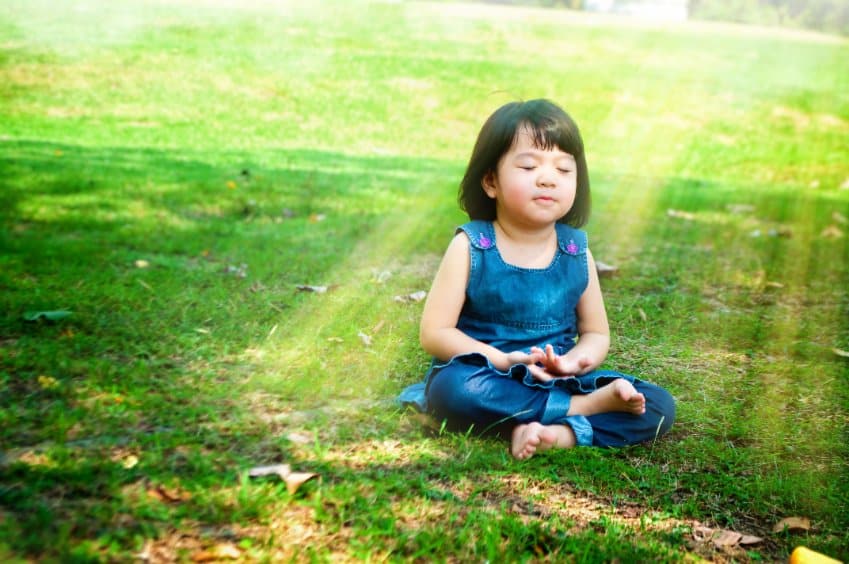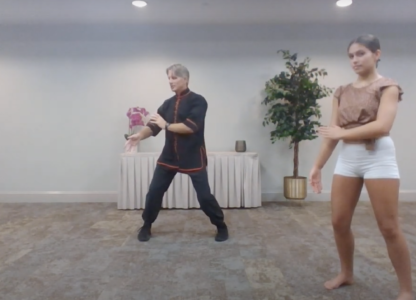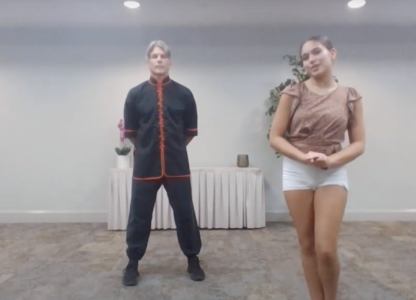Many people these days are learning mindfulness, often through practices like meditation, Qigong, or yoga. What about kids? Can mindfulness be practiced by children, and is it beneficial for them? At first, it might seem impossible to imagine kids doing something like meditation—after all, getting them to sit still for a minute can sometimes be a feat! But mindfulness can take many shapes and exercises don’t have to be long. Listening to meditative music before bedtime, a few seconds of deep breathing, or an active listening exercise—all of these are ways to tap into that space we call mindfulness.
Mindfulness helps kids deal with stress and feel more relaxed. It can help improve their concentration and encourage them to become more attentive listeners. In this three-part blog series, we talk about these benefits and give some tips for introducing mindfulness into your kids’ lives.
Why is mindfulness important for kids?
From the pressures of school to the ups and downs of adolescence, growing up involves a huge range of experiences and emotions, many of which are not easy. Practicing mindfulness can help kids feel more grounded and equip them with skills to handle stress or anxiety effectively. For instance, deep breathing or meditation (both examples of mindfulness) teach kids how to enter into a calm mental state even when there are other things going on around them. If we think about how much there is to gain through practices of mindfulness, we can imagine how practicing these skills at a younger age would have a tremendous impact on our lives.
Mindfulness is exactly what it sounds like—it’s about being mindful, or thoughtful, about what we do. Even simple listening exercises can help improve kids’ ability to focus, since it involves honing their attention on specific things in their environment. It also helps kids become more aware of themselves, which is closely tied to their ability to be empathetic and open to others.
How do you practice mindfulness with kids?
There are many different ways to practice mindfulness with kids, including meditation and Qigong. Here we describe a few exercises that involve simply listening and observing things to get you started. We recommend trying them together with your kids and talking about your shared experience.
Tune into Sound
Closing your eyes, listen for any sounds you hear. Try following one. Where does it lead? Does it stay the same or change? Does it overlap with another sound? What does it make you think of? Quietly listen for one full minute. Then open your eyes and talk about what you each noticed and felt.
Listen to the Body
In this exercise, turn your awareness to the body. We encourage you to close your eyes. What parts of your body feel calm, what parts feel tense? Do you notice any urges, like hunger, or the need to stand up and move? Do you feel happy, sad or angry? If so, what part of your body do you feel these emotions? Without speaking and being as still as possible, listen to your body for one minute, then share with each other what you learned.
Observe What’s Around You
Go for a short walk together. Mentally take note of the things you observe. Are you in a city or in nature? What sounds do you hear? What does the air feel like? Are there any smells? How does your body feel moving in this space? Take note of each of your senses and how they interact with one another. See if you can pin-point one dominant mood or feeling. Note any mental images that come to mind. Focus quietly on the things around you. Then, discuss what you noticed. This activity can be done anywhere, sitting or standing, inside or outside, and doesn’t necessarily have to involve a walk. But going for a walk might give you new things to see and talk about.
You could say that these are all acts of simply noticing. Taking just a minute to listen or observe quietly helps us tune into the world around us. Sitting through different emotions or urges without immediately acting on them is also an exercise in patience that helps kids be grounded in their decision-making and to be conscientious communicators.
In our next post, we go into a more specific kind of mindfulness: meditation. If you’re interested in learning more, stay tuned for our post on how to practice meditation with kids.
David’s Video: “Meditation and Mindfulness for Kids”
See our YouTube channel for more video content.







